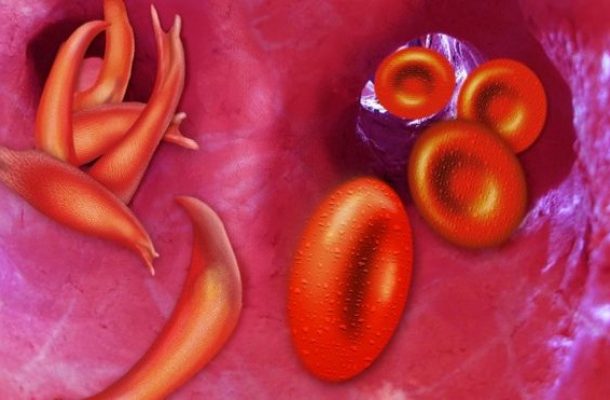New research suggests that the history of sickle-cell disease goes back to a mutation in just one person, a development researchers hope will make treatment less complicated for the many people who suffer from this painful illness.
So how have they traced it and why does it matter?
The story of sickle-cell disease is, first and foremost, a study in how a good thing can come with bad consequences.
Once upon a time in what is now the Sahara desert, a child was born with heightened immunity to malaria - important because at the time, this part of Africa was wet and rainy and covered with forest.
It was a great habitat for mosquitoes, which carry malaria, a disease that these days kills one child every two minutes.
With a better chance against an illness that was a major killer, then as now, this child with the genetic mutation lived and had children, and those children spread out, all bolstered with extra defences against malaria and living for longer, and their descendants around the world still have those extra defences today, more than 250 generations later.
But here's where the bad consequences come in.
If both your parents have that gene mutation, you can end up with sickle cell disease, which brings severe pain and other complications to its patients. These include shortness of breath, strokes and vision problems.
And people who inherit the gene from both parents do not have its protection against malaria.
In a study published on Thursday in the American Journal of Human Genetics, Daniel Shriner and Charles Rotimi from the Center for Research on Genomics and Global Health presented findings from analysing the genomes of nearly 3,000 people, 156 of whom had sickle cell. The researchers say they traced the mutation back for 7,300 years, and found it started with just one child.
Why does this matter? It helps with classification, Dr Rotimi says. He tells the BBC that it will give doctors "a better understanding of how to classify sickle patients in terms of disease severity".
What is sickle cell disease?
Sickle cell disease is a lifelong condition caused by a faulty gene that affects how red blood cells develop
SCD mainly affects people of African, Caribbean, Middle Eastern, eastern Mediterranean and Asian origin. It is the fastest-growing genetic disease in the UK, but most cases are in sub-Saharan Africa
According to the US Centers for Disease Control, sickle cell trait is common among people who live in areas where malaria is endemic
People with sickle cell are often at an increased risk of contracting serious infections or they could become anaemic, which is when red blood cells cannot carry enough oxygen around the body. This can cause tiredness and shortness of breath
Some patients have regular blood transfusions - usually every three to four weeks - as a form of treatment for the condition.
A year ago, a French teenager's sickle cell disease was reversed using gene therapy - a rare and expensive treatment.
It is "imperative to use this new classification for improving our clinical care", Dr Rotimi says, in Africa and around the world.
But Frederick B. Piel of Imperial College London has told the New York Times that he wants to see bigger studies to see if they come to the same conclusions.
For decades scientists have wondered whether the mutation happened just once, or whether it happened at different times in different places.
Sickle cells were first found in the US in people of African origin, but they are also common in people from the eastern Mediterranean (particularly Greece), the Middle East and parts of Asia.
Up until now, he says, "we've been labelling these various types using ethnolinguistic groups which really does not provide any clinical insight - those are just where the patient was first noted," Dr Rotimi says.
Perhaps, researchers thought, there wasn't just one "once upon a time". Instead several children developed the advantage against malaria separately. So it happened once upon a time in Senegal, and once upon a time in Cameroon, and in Benin, and in the Central African Republic.
But Dr Shriner and Dr Rotimi found that the people they traced had very similar genetic mutations, with those in Kenya, Uganda, South Africa and the Central African Republic being so similar that they would fit a pattern of having been distributed by migrations of the Bantu people.
The Bantu, from West Africa, moved eastward and southward about 2,500 years ago.
So is Dr Rotimi certain of what his study has found?
At that question, he laughs out loud: "As a scientist it's always a bad idea to say something is final. I never really take the position that this is the final answer."
But, he says: "The information that we have now seems to make it quite clear that the multiple origin is not supported."
And from a scientist, perhaps that is as close to "once upon a time" as we are going to get.
Bigger studies may or may not come up with the same results, but for now, the image endures of one lucky child with a very mixed global legacy.
Source: BBC


Comments